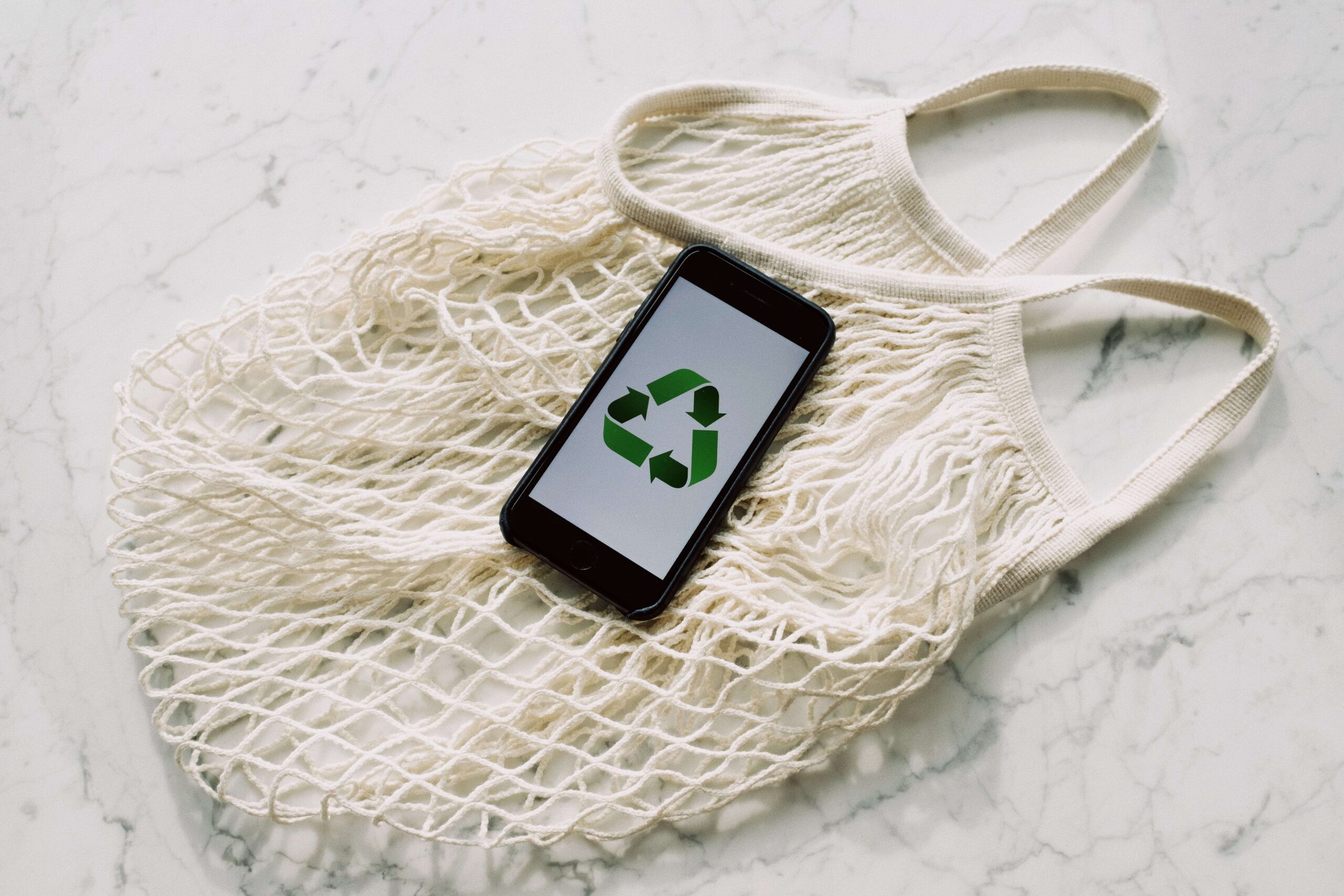
Innovative Green Marketing Strategies for Modern Businesses
Here is a glimpse into the future for you. Tomorrow’s success stories will be crafted by those who adopt genuine green practices, engaging consumers in a shared journey towards a healthier, more sustainable world. Green marketing is the seismic shift in how businesses operate.
You may like: 6 Metrics for Assessing Sustainability in eCommerce
Big names like Apple, Google, and Amazon have already taken a giant leap towards a greener future. They’ve committed to bringing their carbon footprints down, going all-in to make a real difference. They are a testament that green marketing is a thrilling journey towards a planet-friendly, eco-conscious world!
What Is Green Marketing?
From making things to getting rid of them, green marketing means creating and selling products while caring about the environment. It’s an exciting journey that focuses on doing things in a friendly way for the environment at every step.
Sustainable business practices are a key part of green marketing. This means using eco-friendly methods like renewable energy, reducing energy and water use, recycling, and sourcing materials ethically. Companies often get certifications like Organic or Fair Trade to show they’re serious about being sustainable.
Check out: 5 sustainable brands shaping a greener future on Instagram
Companies talk to customers about their eco-friendly practices, show why using green products is beneficial, and raise awareness about environmental issues.
A structured green marketing strategy helps send clear messages to explain how choosing sustainable options can make a positive difference, encouraging people to buy more eco-friendly products.
Green Marketing Strategies
Connecting with the eco-conscious customer is an important step for businesses trying to adopt a successful green marketing strategy. These strategies, spanning product development, operations, communication, and community engagement, are all about using sustainable practices. It’s like exploring various paths to do good for the environment while connecting with people who care about it.
1. Eco-Friendly Products and Packaging:
In green marketing, the spotlight shines on eco-friendly products and their packaging. Companies can do this by using materials that use resources judiciously and design packages that can be recycled, used again, or break down easily.
2. Sustainability Certifications:
Certifications like Fair Trade, Organic, or B Corp. are a benchmark for businesses aiming to go beyond mere profitability, emphasizing their commitment to social and environmental responsibility. These certifications prove that a company follows certain rules to help the environment and treat people fairly fostering trust with stakeholders and customers.
3. Carbon Neutral Shipping:
Carbon-neutral shipping aims to minimize the pollution caused during transportation. Some techniques that can help achieve this goal are using eco-friendly transportation modes, route optimization, fuel efficiency, energy-efficient warehousing, eco-friendly packaging, and waste reduction and recycling or partnering with shipping companies that meet these benchmarks.
4. Energy-Efficient Operations:
One of the most most differentiating factor is transitioning to a sustainable energy source. Whether through the installation of solar panels or the utilization of hydro or wind energy, adopting renewable sources minimizes the environmental impact of energy consumption. Collaborating with businesses that prioritize green energy practices is an effective strategy to promote sustainability if a direct switch is not feasible.
5. Feedback and Community Engagement:
Engaging with customers and communities can be a cornerstone in green marketing. Companies actively seek opinions from people about being eco-friendly, educate them on environmental impacts, and encourage involvement in initiatives such as recycling or community clean-ups. This interaction helps companies build stronger connections, foster loyalty, and create a positive brand image.
Green Marketing vs. Greenwashing
Greenwashing happens when companies try to show themselves to be more environmentally friendly than they truly are. They do this by misleading people, exaggerating their eco-friendly actions, or pretending their products are better for the environment than they actually are. Essentially, it’s a tactic to make consumers think they’re buying from a responsible, environmentally conscious company, even if the company’s actions don’t match their claims.
Distinguishing Genuine Green Marketing from Greenwashing:
Real green marketing means truly trying to be sustainable in all parts of a business—like making products, running the company, and talking honestly about eco-friendly practices. It’s about openly sharing true information on how a company helps the environment. On the other hand, greenwashing is when companies trick people by making fake or exaggerated claims about being eco-friendly without any real proof.
Examples of Greenwashing Practices:
1. Misleading Labels: Using terms like “eco-friendly,” “natural,” or “green” without providing specific details or evidence supporting these claims.
2. Exaggerated Claims: making broad environmental claims without factual data or certifications to support them, such as claiming a product is 100% sustainable without evidence.
3. Irrelevant Imagery: Displaying nature-related imagery or symbols that imply eco-friendliness but are unrelated to the actual product’s environmental impact.
4. Lack of Transparency: Failing to disclose relevant information about a product’s production process or environmental impact, hiding behind ambiguous statements.
How to Avoid Greenwashing:
1. Transparency: Provide clear and specific information about sustainability efforts, backed by data, certifications, or verifiable claims.
2. Certifications and Standards: Obtain and display credible certifications like USDA Organic, Energy Star, or Fair Trade to validate eco-friendly claims.
3. Accurate Messaging: Avoid vague or exaggerated language in marketing materials and instead provide factual information about environmental initiatives.
4. Third-Party Verification: Engage third-party organizations or auditors to verify and validate sustainability claims, enhancing credibility.
5. Continuous Improvement: Demonstrate a commitment to ongoing improvement in sustainability practices, communicating progress honestly.
Following these principles helps companies do honest green marketing, build trust with customers, and actually help the environment. When companies are truthful and genuinely care about being eco-friendly, it makes people believe in their efforts and encourages environmental conservation.
Summing Up
The market for sustainable packaging is expected to reach a valuation of US$ 266.4 billion by 2023, with a strong compound annual growth rate of 7.2% expected during the forecast period, according to futuremarketinsights.
Green marketing is becoming more important because people care about the environment. Companies are changing how they do things to be more eco-friendly because consumers want it. This isn’t just a trend; it’s a big change in how businesses work. It’s about being honest, doing good for the planet, and making products that people who care about the environment want to buy.
Governments are also pushing for companies to be more eco-friendly. In the future, businesses that truly care about the environment and are open about their efforts will do well and gain loyal customers who also care about sustainability.
Overall, green marketing is a way for businesses to make a positive impact on the world and succeed in a more environmentally conscious economy.
Find Your Partner in Success
Partner With An eCommerce Agency That Believes in Your Values
- About the Author
- Latest Posts
Formerly an English trainer, a dearth of creativity led me into the realm of digital marketing. I now channel my linguistic prowess as a copywriter at CueBlocks.
-
Evaluating the Carbon Emissions of Shopify Themes
by Harleen Sandhu
Committing to green claims as a business is a huge promise to deliver on. For ecommerce stores, Shopify is leading …
Continue reading “Evaluating the Carbon Emissions of Shopify Themes”
-
Dark Mode: Accessibility vs Sustainable Web Design
by BalbirIntroduction Dark mode, a feature that lets users switch the color scheme of an app or website to darker colors, …
Continue reading “Dark Mode: Accessibility vs Sustainable Web Design”
-
Discover Essential Sustainable Marketing Principles and Strategies for Ethical Business Growth
by Pancham Prashar
Given the major issues that our world is currently facing, such as pollution and climate change, sustainability becomes an inevitable …
-
Show, Don’t Tell: Demonstrating Transparency in Your eCommerce Store
by Pancham PrasharFor an eCommerce brand committed to good, success goes beyond creating excellent products; it extends to effectively communicating your values …
Continue reading “Show, Don’t Tell: Demonstrating Transparency in Your eCommerce Store”
-
How to Market Sustainable Products Effectively
by Nida Danish
In today’s market, sustainability has evolved from a passing trend to a pivotal consideration for both consumers and businesses. Globally, …
Continue reading “How to Market Sustainable Products Effectively”
-
Decoding B Corp Marketing Challenges: Strategies for Success
by Nida DanishToday, businesses place high importance on sustainability and ethical practices. For B2B and e-commerce leaders, being a certified B Corp. …
Continue reading “Decoding B Corp Marketing Challenges: Strategies for Success”





2 Replies to “Innovative Green Marketing Strategies for Modern Businesses”